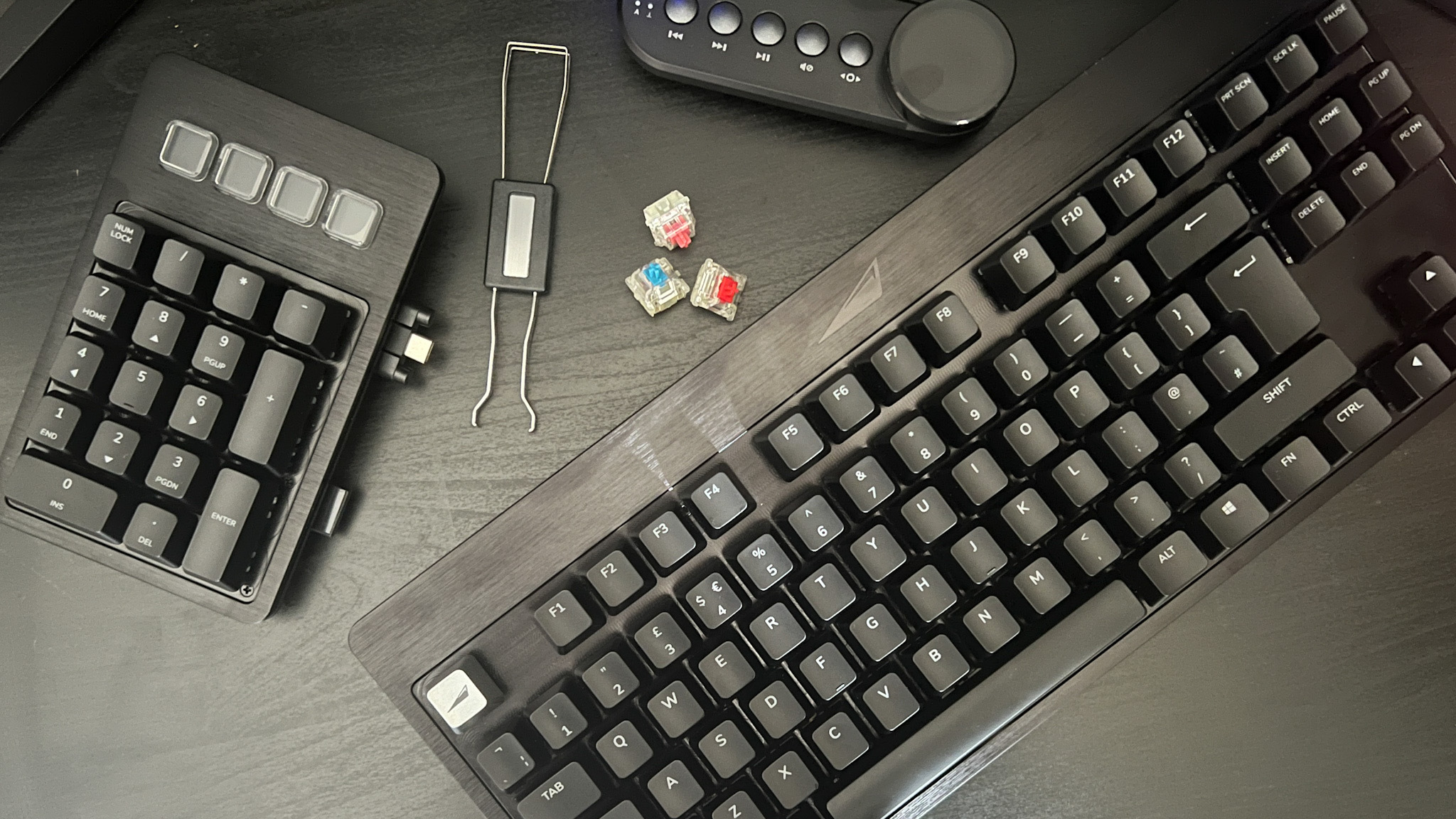GamesRadar+ Verdict
The Mountain Everest Max certainly won't be for everyone at $299.99, but if you're looking to invest in a high-quality, flexible, feature-packed deck this is certainly money well spent.
Pros
- +
Incredibly versatile design
- +
Hot-swappable switches
- +
Digital display dial with plenty of features
- +
Premium look and feel
Cons
- -
Not fast enough for tournament-grade use
- -
Cheaper ABS keycaps on $299.99 model
Why you can trust GamesRadar+
The Mountain Everest Max promises a whole console of controls, macros, and additional hidden features for the gamer who wants it all on their desktop. The full setup comprises a modular number pad and dedicated media panel, connected to the base TKL hot-swappable keyboard via USB-C.
All that fancy gear does come at a price, though, with costs starting at $299.99 / £249.99, so we put the whole rig through its paces to see just where it fits among the best gaming keyboards currently on the market. After spending a few weeks running the Mountain Everest Max in both gameplay and daily typing, it's easy to see that this is a game-changer for those looking to make a significant investment - if you can get past that high starting price.
Design
You're certainly paying for a solid build here, with an air of luxury from that brushed aluminium base plate. The Mountain Everest Max looks gorgeous, with a sleek profile and ergonomic form factor. The modular number pad can be placed on either the left or right of the deck itself to make room for larger mouse sweeps and the detachable media control panel can also sit on either side of the top as well. Due to the fact that this piece hugs the larger bezel running at the head of the keyboard, though, you won't be able to fit it along the side.
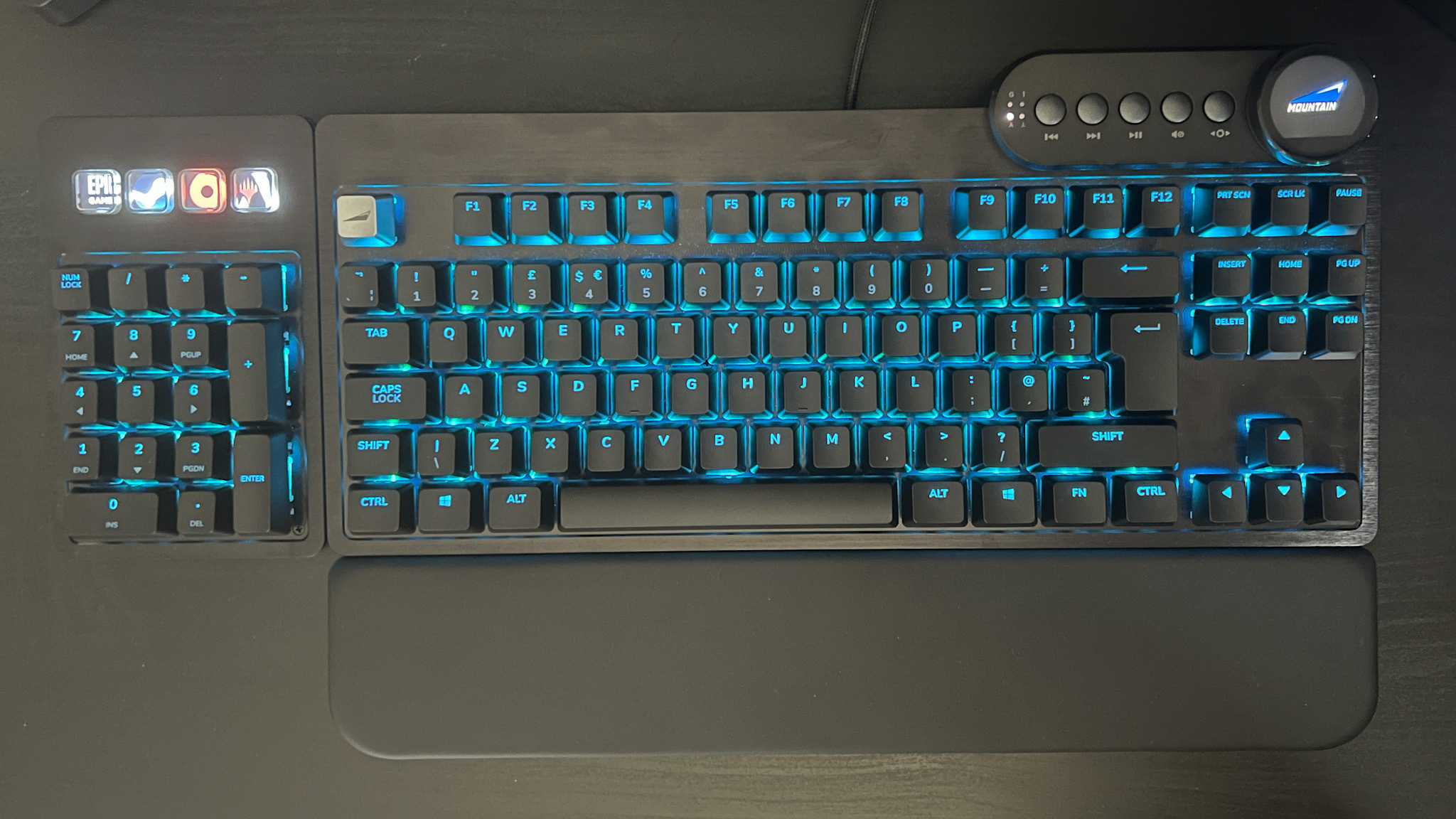
All of that makes for a particularly flexible design, especially if you're switching from work to play at the drop of a hat (the Mountain Everest Max can also be stripped down to just the TKL format). However, that durable aluminium gives way to a plastic undershell that can work together to create a significant ping sound with every keypress. Thankfully, because of the hot-swappable design, pulling those Cherry MX switches out and applying a little G-Lube sorted this out for me.
RGB is present throughout the Mountain Everest Max's design, with per-key lighting across both the main deck and number pad. However, there's also a subtle glow from an RGB strip around the sides of the device, visible sandwiched between two plates. It's not quite powerful enough to bleed onto the desktop itself but it certainly completes that premium look.
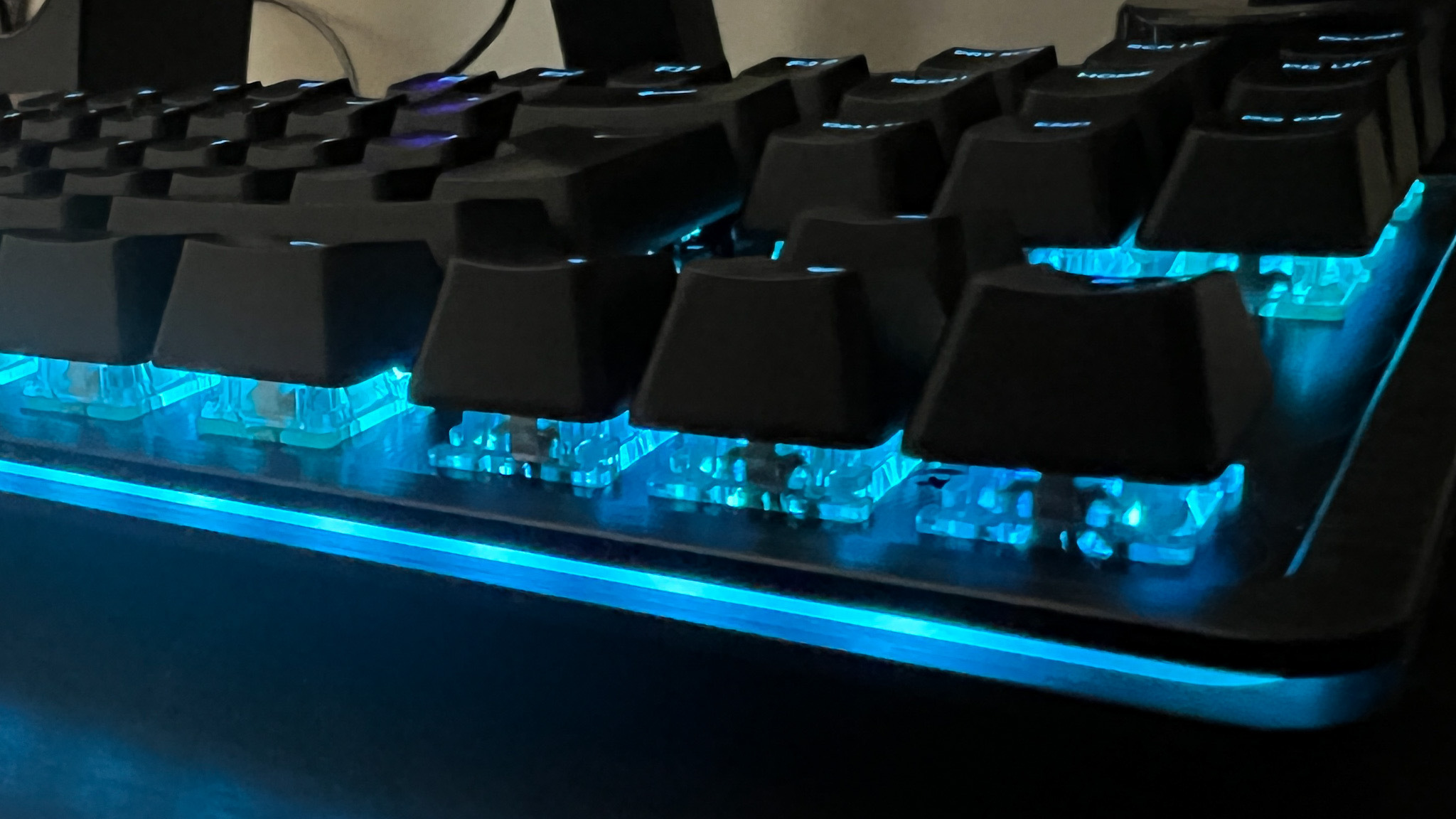
I did find it slightly frustrating that the dedicated LED macro buttons are positioned on the number pad. I found myself attaching the whole pad just to have access to these buttons during gaming sessions, which made the whole footprint larger.
That number pad is connected via USB-C with a couple of magnets providing support. It felt solidly attached during everyday work and play, and snapped nicely into position (as did the dedicated media dial). However, should you need to move this deck around regularly it's worth noting that this connection is quick to fall out when lifting the keyboard.
Overall, though, the modular design of the Mountain Everest Max is a revelation. Sure, we've seen detachable mod-cons on mechanical keyboards before but just take a look at 2013's Mad Catz S.T.R.I.K.E 7 and you'll see just how far we've come. This is a streamlined, subtle, and incredibly flexible design.
Features
With all that flexibility comes a massive bank of features to sink your teeth into - you're certainly getting your money's worth if you're looking for optional extras here. Hot-swappable switches, a fully programmable deck, dedicated macro buttons, a digital display dial for all manner of vitals, settings, and on-the-fly changes - this spec sheet is certainly a lofty one.
It was the digital dial that wowed me, though. Sure, LED screens have been tacked onto keyboards for a long time now - some even offering impressively large touchscreen panels. However, there are so many functions baked into this dial it's difficult to imagine returning to a simple set of buttons. From tracking and displaying APM to offering up key system metrics at the drop of a hat, there was plenty to dive into here and the satisfying click to each turn was the cherry on top.
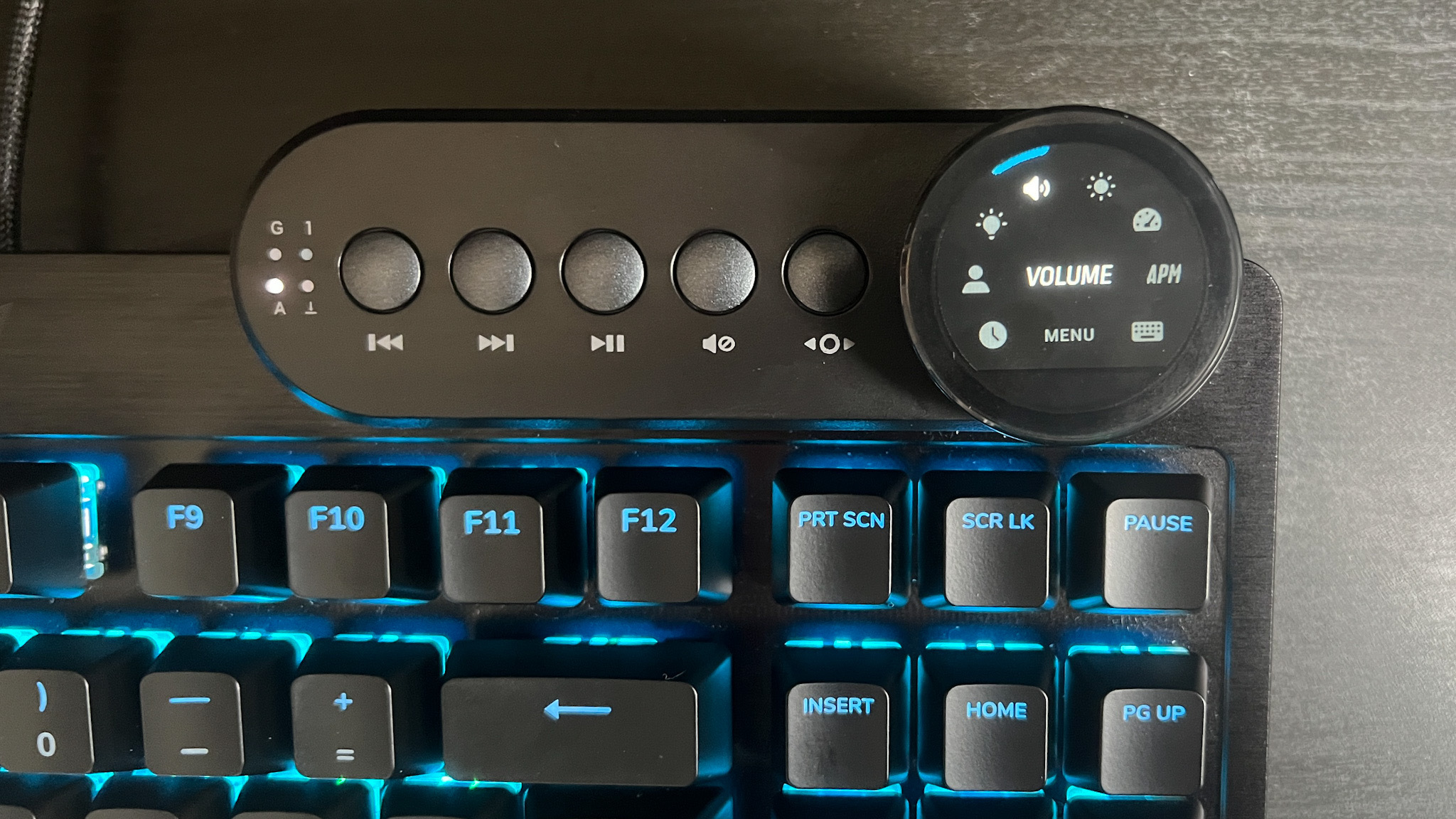
You can configure the available display options for this dial in the Base Camp software, a fairly stripped-down piece of kit for assigning presets, recording macros, and customizing RGB (there's even Razer Chroma support in here). However, streamers should take note - this software also has built-in integration with OBS as well.
For all the luxury of hot-swappable switches, fancy LED displays, and modular components, the ABS keycaps that ship with the cheapest version of the Mountain Everest Max are a little disappointing. It's certainly not a deal-breaker, there's nothing stopping you from throwing your own after-market keycaps on here or upgrading to a PBT set from Mountain, but considering this is a $300 keyboard those buttons do feel a little cheap under the fingers.
Performance
The Mountain Everest Max is fast enough for high-octane gaming, though a little slower than devices purpose-built for twitch reflexes like the HyperX Alloy Origins 60 or Razer Huntsman Tournament Edition. Still, response times were speedy enough to handle the desperate firefights of Borderlands 2 and the additional programmability felt incredibly powerful during heavier Planet Coaster and Cities Skylines sessions.
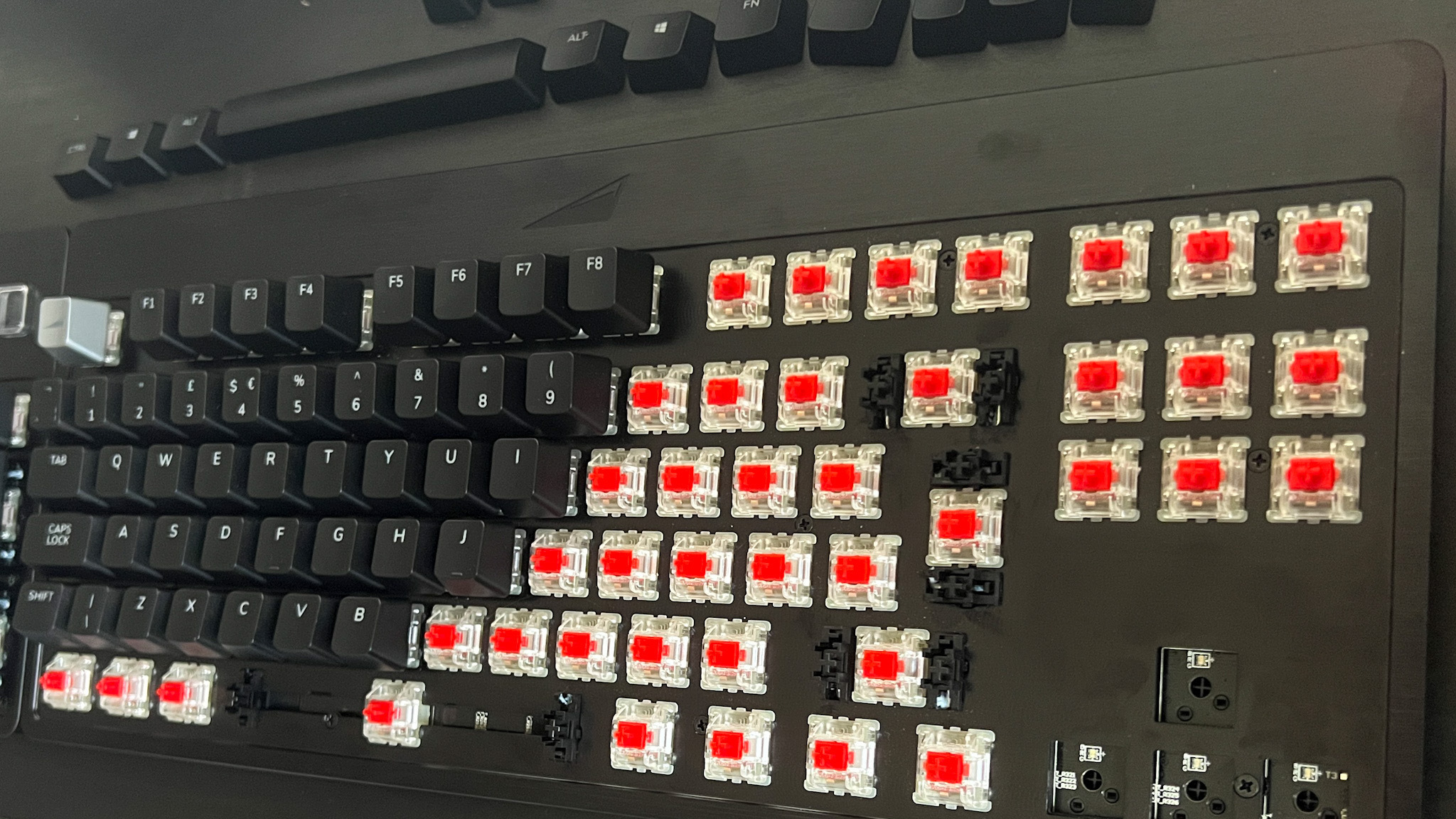
Repeat keypresses aren't quite as fast as more streamlined decks. I sometimes experienced clustered responses when right at the bottom of actuation, but these situations only came up when specifically pushing those response times to their limits. This deck performs nicely during everyday gameplay, offering excellent travel across the full space and a comfortable setup for longer sessions as well.
The typing experience was enhanced with the addition of PBT keycaps and some slight maintenance on the stock Cherry MX Red switches that my unit shipped with, as things were a little stiff straight out of the box. However, it was quick and easy to swap out those stock switches, and considering this deck uses a simple three-pin seat there are plenty of premium and budget switches to choose from.
Should you buy the Mountain Everest Max keyboard?
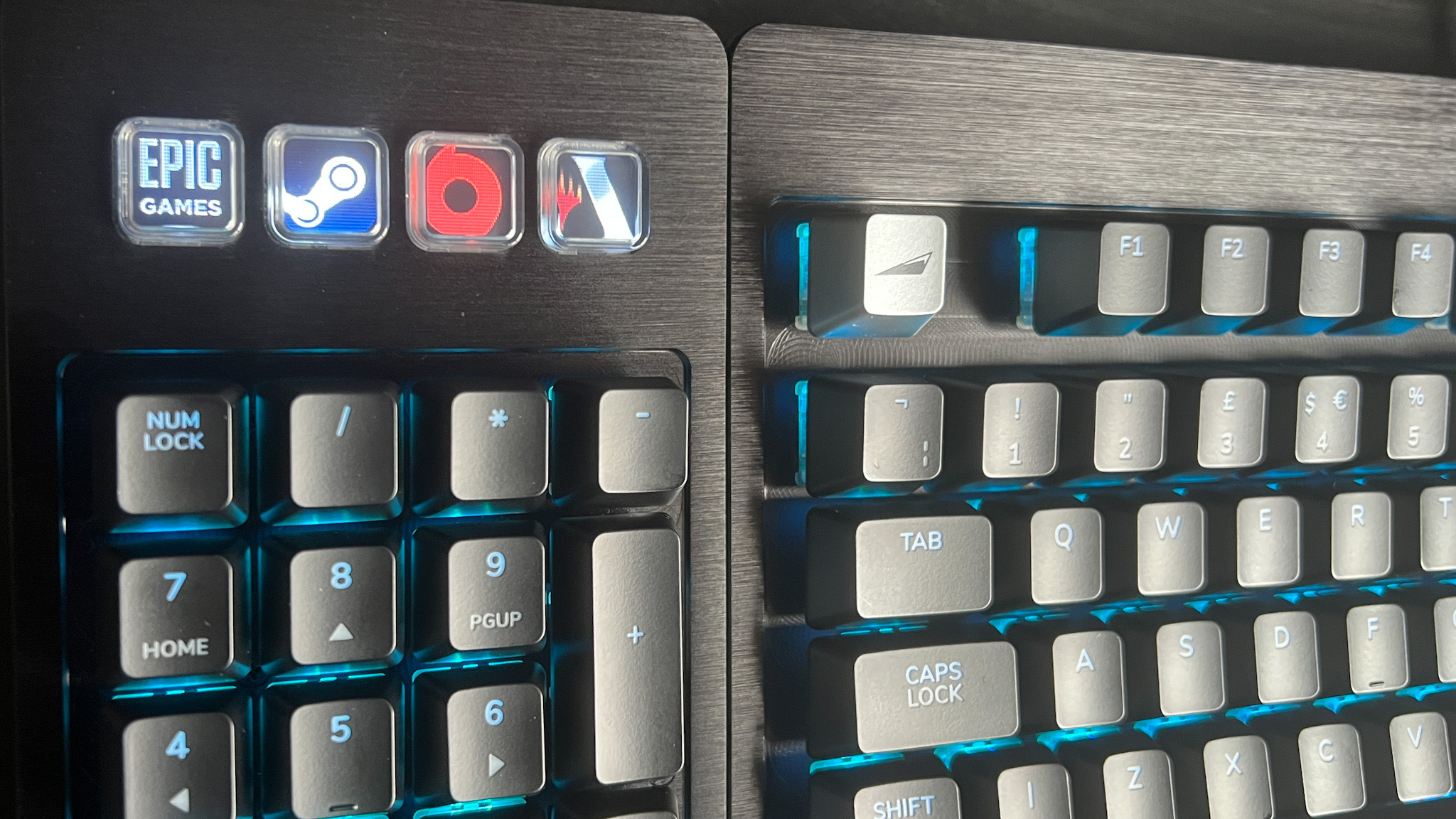
The Mountain Everest Max certainly isn't a cheap gaming keyboard, but if you're looking for something you can truly make your own that $299.99 price point doesn't look quite so scary. Of course, this isn't an entry-level rig - if you're just looking for a speedy device with some nice mechanical switches under the hood we'd recommend shopping in the $50 - $150 price range (the SteelSeries Apex 5 clocks in at $99.99 and still retains an OLED display - though not one as capable at this). Or, if you're more concerned with experimenting with your own switches but don't need the modular design on offer here, the Vissles V84 keyboard offers a budget hot-swappable alternative.
However, there's nothing quite like the Mountain Everest Max on the market right now. Those looking to invest in a long-term, flexible deck with plenty of upgradeability and a plethora of core gaming functions baked in should certainly take note.
How we tested the Mountain Everest Max
I used the Mountain Everest Max primarily for gaming during a two-week period, testing the deck against similarly premium gaming devices like the Razer Huntsman V2 and hot-swappable decks like the Vissles V84. I used Borderlands 2 to test speed and response times during heavy gameplay moments and tested the flexibility and useability of programmable macros in Planet Coaster and Cities Skylines. I also used the Mountain Everest Max as a daily driver for work tasks over the course of a week.
If you're after more gear for the ultimate setup, check out the best gaming mouse and best gaming headset options on the market. If you're hunting down your next set of keys by brand, though, we're also rounding up all the best Razer keyboards available right now.

Managing Editor of Hardware at GamesRadar+, I originally landed in hardware at our sister site TechRadar before moving over to GamesRadar. In between, I've written for Tom’s Guide, Wireframe, The Indie Game Website and That Video Game Blog, covering everything from the PS5 launch to the Apple Pencil. Now, i'm focused on Nintendo Switch, gaming laptops (and the keyboards, headsets and mice that come with them), PS5, and trying to find the perfect projector.
